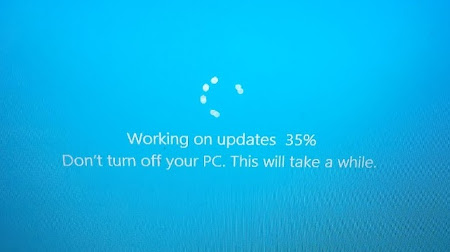I. Introduction
A. Definition of Windows Update
Windows Update is a service developed by Microsoft that provides regular updates to the Windows operating system. These updates include security patches, bug fixes, and feature enhancements.
B. Importance of Regular Updates
Regular updates are crucial for maintaining the security and functionality of your system. They address vulnerabilities, improve system stability, and introduce new features, contributing to an overall enhanced user experience.
II. Evolution of Windows Updates
A. Early Days of Manual Updates
In the early days, users had to manually download and install updates. This approach, while effective, was often cumbersome and time-consuming.
B. Introduction of Automatic Updates
To streamline the update process, Microsoft introduced automatic updates. This marked a significant shift, allowing systems to receive and install critical updates seamlessly.
C. The Role of Patch Tuesday
Microsoft follows a monthly release schedule known as Patch Tuesday. On this day, security updates and patches are released, ensuring a consistent and predictable update cycle.
III. Benefits of Windows Updates
A. Security Enhancements
One of the primary benefits of www.windowsphonefr.com/ is the enhancement of system security. Regular updates address vulnerabilities, protect against emerging threats, and strengthen the system’s defense mechanisms.
B. Bug Fixes and Stability
Windows updates also include bug fixes, addressing issues that users may encounter. This contributes to system stability, reducing the likelihood of crashes or malfunctions.
C. New Features and Improvements
Beyond security and stability, updates bring new features and improvements. This ensures that users can take advantage of the latest advancements in technology and enjoy an optimized computing experience.
IV. Common Concerns and Misconceptions
A. Update Disruptions
Some users worry about updates disrupting their workflow. However, with the introduction of background updates and customizable installation times, these disruptions are minimized.
B. Data Privacy Concerns
Privacy concerns often arise, but Microsoft is committed to transparency. Users can review update details and choose the information shared with the company.
C. Compatibility Issues
Compatibility concerns are addressed through rigorous testing. Users can check system requirements before updating to avoid potential issues.
V. How to Manage Windows Updates
A. Configuring Automatic Updates
Configuring automatic updates ensures that your system receives the latest patches without manual intervention. This is a convenient option for most users.
B. Manual Update Options
For those who prefer more control, manual update options allow users to choose when and which updates to install.
C. Troubleshooting Update Problems
In case of issues, Windows provides troubleshooting tools to diagnose and resolve update-related problems.
VI. Best Practices for a Smooth Update Experience
A. Backing Up Important Data
Before updating, it’s advisable to back up important data to prevent data loss in the rare event of an update-related issue.
B. Checking System Requirements
Ensure your system meets the requirements for the latest updates to avoid compatibility issues and performance issues.
C. Being Patient during the Update Process
Updates may take time, depending on the size and complexity. Patience ensures a smooth update experience without interruptions.
VII. Windows Update and System Performance
A. Impact on System Resources
Updates may temporarily impact system resources, but this is a small trade-off for the long-term benefits they bring.
B. Addressing Performance Issues
For users experiencing performance issues, optimizing system settings and updating drivers can help restore smooth operation.
VIII. The Future of Windows Updates
A. Continuous Improvement and Innovation
Microsoft is committed to continuous improvement, ensuring that updates not only address current issues but also pave the way for future innovations.
B. User Feedback and Inclusion
User feedback plays a crucial role in shaping updates. Microsoft actively listens to user concerns and incorporates valuable feedback into their development process.
IX. Conclusion
A. Recap of Windows Update Importance
Regular Windows updates are indispensable for a secure, stable, and feature-rich computing experience.
B. Encouragement for Regular Updates
In conclusion, embracing Windows updates is not just a choice but a responsibility. By staying updated, users contribute to the overall health of the digital ecosystem.

